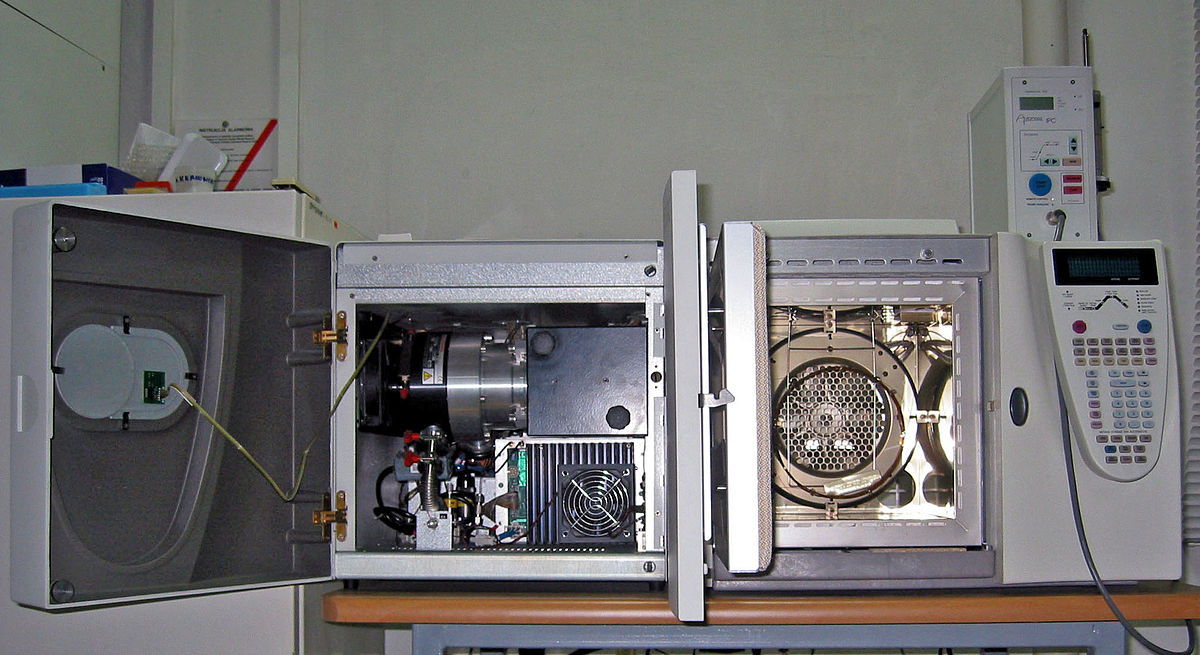Mass spectrometry (MS) is an analytical technique that ionizes chemical species and sorts the ions based on their mass-to-charge ratio. In simpler terms, a mass spectrum measures the masses within a sample. Mass spectrometry is used in many different fields and is applied to pure samples as well as complex mixtures.
A mass spectrum is a plot of the ion signal as a function of the mass-to-charge ratio. These spectra are used to determine the elemental or isotopic signature of a sample, the masses of particles and of molecules, and to elucidate the chemical structures of molecules and other chemical compounds.
In a typical MS procedure, a sample, which may be solid, liquid, or gas, is ionized, for example by bombarding it with electrons. This may cause some of the sample’s molecules to break into charged fragments. These ions are then separated according to their mass-to-charge ratio, typically by accelerating them and subjecting them to an electric or magnetic field: ions of the same mass-to-charge ratio will undergo the same amount of deflection. The ions are detected by a mechanism capable of detecting charged particles, such as an electron multiplier. Results are displayed as spectra of the relative abundance of detected ions as a function of the mass-to-charge ratio. The atoms or molecules in the sample can be identified by correlating known masses (e.g. an entire molecule) to the identified masses or through a characteristic fragmentation pattern.
Mass spectrometry procedure includes sample taking, sample preparation, chromatography, and MS but Dr. *** used another process by adding hot methane gas and preparing the sample in a series of connected tubes which then was directed toward the MS device.
During time improvement of MS machines from a triple man size machine to a half, a meter height one made usage of MS machines affordable and possible in many areas. Among the variety of MS’s applications, gas content and mixture was the chosen issue for Dr. ***. By using a van and setting up all required equipment for mass spectrometry in that van he was able to do live and continues measurement of gas content. The process explained before had a significant role in making live analysis possible.
The set up was used for air, water and soil content’s live analysis around Prince George. In air quality measurement the target gases were SOa, VOC, PN, as primary gases and SOA, O3, NO2 as secondary products. The sources of these pollutants are forest fires, agriculture, transportation and forestry. The air would have entered to the device from front of the car, got analyzed and escaped from the rear side of the car. The same condition was with water except that the car should have been stopped for measurement so the live measurement was possible only with currents.
The devices needed energy while moving they used the car engine but if they didn’t move they had to turn the car off so the exhaust gas doesn’t get involved in the sample. Fans were installed for cooling devices with lower energy consumption while the car was turned off.
Sampling and analysis are parts of many researches. Even though MS might not be part of all researches but the concept of using new processes and their method would inspiring for other researchers.
Most of the questions were about the “van” which are referred previously.


Recent Comments